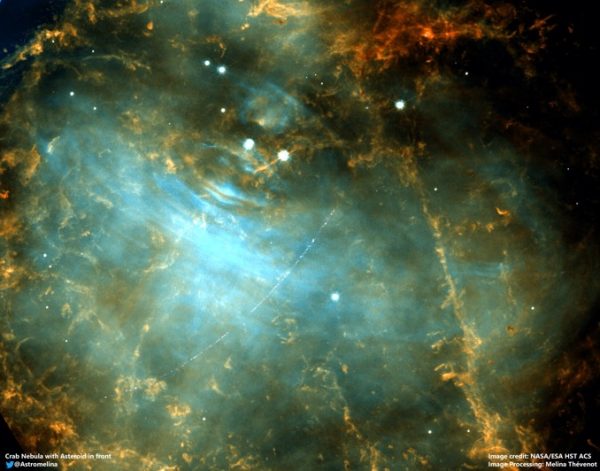Citizen scientists track down asteroids in Hubble photos – Astronomy Now Online

More than 1,900 citizen scientists working with European Space Agency astronomers in the Hubble Asteroid Hunter project have identified more than 300,000 asteroid trails captured by chance in nearly 11,000 archived Hubble Space Telescope photos, including one of the observatory’s many spectacular shots of the Crab Nebula.
German enthusiast Melina Thévenot spotted an asteroid trail in a 2005 image of the famous supernova remnant, one of nearly 300 Hubble observations of the nebula. Thévenot combined views taken in blue, green and red filters to create a striking photo showing the faint trail of asteroid 2001 SE101 arcing from lower left to upper right near the centre of the nebula.
The Crab Nebula, the first object listed in French astronomer Charles Messier’s 18th Century catalogue of comet-like objects, is the remnant of a supernova blast first seen in 1054. The spinning neutron star, or pulsar, left in the wake of the explosion is the left star in the bright pair near the centre. The nebula is located near the ecliptic plane where most asteroids orbit so it’s not unexpected that an asteroid might “photobomb” one of Hubble’s observing sessions.
Data from the Hubble Asteroid Hunter project allows astronomers, knowing the time and date of all Hubble observations, to identify previously unknown bodies and to pin down an asteroid’s orbit, velocity and trajectory.





